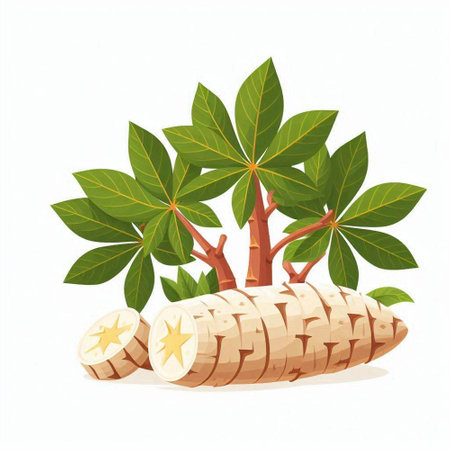Introduction: Tulsi’s Sacred Status in Indian Culture
Tulsi, also known as Holy Basil, occupies a place of profound reverence and significance in Indian culture. Found in the courtyards and balconies of countless Indian households, this sacred plant is cherished not only for its medicinal properties but also for its deep spiritual symbolism. In India, Tulsi is more than just a herb; it is venerated as an earthly manifestation of the goddess Tulsi or Vrinda, who is considered a devoted worshipper of Lord Vishnu. This unique blend of botanical importance and spiritual narrative has established Tulsi as an essential part of daily life and rituals across diverse regions of the country. The act of nurturing a Tulsi plant at home is believed to bring prosperity, peace, and positive energy, while its leaves are often used in religious ceremonies, prayers, and traditional remedies. Over centuries, the cultural relevance of Tulsi has been interwoven with India’s artistic expressions—its music, literature, and visual arts—reflecting the plants enduring influence on the nations collective consciousness.
2. Tulsi in Indian Classical and Folk Music
Tulsi, or holy basil, holds a unique place in Indian classical and folk music traditions, deeply intertwined with devotional practices and cultural storytelling. Across the subcontinent, Tulsi is celebrated not just as a sacred plant but also as a recurring motif in bhajans, kirtans, and folk songs that reflect the spiritual ethos of Indian society.
Devotional Songs: Bhajans and Kirtans
In devotional genres like bhajans and kirtans, Tulsi is often invoked for its purity and connection to Lord Vishnu and Krishna. Many compositions use Tulsi as a metaphor for unwavering devotion (bhakti), highlighting her role as a beloved consort of the divine. Lyrics frequently mention Tulsi leaves offered at the deitys feet or garlands made from Tulsi beads, symbolizing surrender and humility.
Examples of Tulsi References in Devotional Music
| Genre | Common Reference | Cultural Context |
|---|---|---|
| Bhajan | “Tulsi dal se pooja karo” | Offering Tulsi leaves in worship rituals |
| Kirtan | “Tulsi mala pehne Re Murari” | Lord Krishna wearing a Tulsi bead necklace |
| Sant Poetry | “Tulsi ki mahima anupam” | Praising the greatness of Tulsi in poetic verses |
Folk Traditions: Bhakti and Sant Poetry
The Bhakti movement, which swept across India from the 15th century onwards, saw saints like Tulsidas, Meera Bai, and Kabir reference Tulsi as both a literal plant and a spiritual symbol. In regional folk poetry—especially in Hindi, Marathi, and Bengali traditions—Tulsi signifies steadfast faith and purity of heart. The imagery of nurturing a Tulsi plant mirrors the devotee’s personal growth on the spiritual path.
Tulsi in Musical Storytelling
In musical storytelling forms such as Harikatha or Pandavani, performers integrate references to Tulsi while narrating episodes from Hindu epics. The presence of a Tulsi plant on stage or symbolic gestures like offering Tulsi leaves during performance reinforce its auspiciousness. These acts resonate with audiences familiar with household rituals involving Tulsi, bridging personal practice with communal art forms.
Through these diverse musical expressions, Tulsi continues to nurture both individual devotion and collective cultural memory in India’s vibrant soundscape.

3. Tulsi within Indian Literature and Mythology
Tulsi, or Holy Basil, holds a cherished place in Indian literature and mythology, where its presence is both symbolic and spiritual. The plants depiction in ancient texts such as the epics—Ramayana and Mahabharata—as well as in numerous Puranas, reveals the depth of its cultural significance.
Tulsi in Epics and Puranas
In the Vishnu Purana and Padma Purana, Tulsi is revered as an earthly manifestation of Goddess Vrinda, whose devotion to Lord Vishnu became legendary. These stories emphasize purity, resilience, and unwavering faith, qualities that Tulsi came to represent in the collective Indian consciousness. In the Ramayana, Tulsi leaves are offered to Lord Rama as a symbol of devotion, further establishing its spiritual stature.
Regional Literature and Folklore
Across India’s diverse linguistic landscape—be it Hindi, Tamil, Bengali, Marathi, or Telugu—regional poetry and folk tales are rich with references to Tulsi. In Marathi abhangs (devotional songs), Sant Tukaram often uses Tulsi as a metaphor for steadfastness amidst adversity. In Tamil Sangam literature, Tulsi (referred to as Thulasi) appears as a symbol of purity in devotional hymns. Folk stories from Bengal tell of households where Tulsi plants serve as silent witnesses to generational stories of love, sacrifice, and faith.
Tulsi in Metaphors and Idioms
The imagery of Tulsi has also seeped into daily language through idioms and metaphors unique to Indian vernaculars. For example, the Hindi saying “Tulsi ke paudhe jaisa pavitra” (pure like the Tulsi plant) highlights moral integrity. Similarly, Telugu proverbs refer to someone’s unwavering loyalty as “Tulasi kota” (as firm as a hedge of Tulsi). Such phrases illustrate how deeply intertwined Tulsi is with Indian values and ideals.
Together, these depictions across epics, puranas, regional literature, idioms, and metaphors showcase how Tulsi is more than just a plant—it is an enduring symbol woven into the very fabric of Indian storytelling traditions.
4. Tulsi Motifs in Visual Arts and Temple Architecture
Tulsi, or Holy Basil, holds a cherished position not only in Indian spirituality but also in the visual arts and temple architecture across India. The plant’s symbolic value as a purifier and protector finds expression through various creative forms, blending tradition with regional aesthetics. Let’s explore how Tulsi is visually represented and revered in different art forms and sacred spaces.
Representation of Tulsi in Traditional Art Forms
Indian artists have long celebrated Tulsi through vibrant motifs in murals and paintings. In regions like Bihar and Odisha, traditional painting styles such as Madhubani and Pattachitra prominently feature Tulsi leaves, stems, and the iconic ‘Tulsi Vrindavan’—a special altar for the plant. These artworks not only serve decorative purposes but also embody stories from Hindu mythology where Tulsi is associated with purity, devotion, and divine protection.
| Art Form | Region | Tulsi Depiction |
|---|---|---|
| Madhubani Painting | Bihar | Stylized Tulsi leaves and Vrindavan altars in intricate patterns |
| Pattachitra | Odisha | Tulsi depicted near temples, alongside deities like Krishna or Vishnu |
| Murals & Wall Art | Pan-India | Tulsi motifs on walls of homes and temples as auspicious symbols |
Tulsi in Temple Courtyards and Rangoli Designs
The sacred presence of Tulsi extends beyond canvas to physical spaces. In many Indian households and temples, you will find a dedicated platform or structure—often called ‘Tulsi Vrindavan’—in courtyards. This not only provides a space for daily worship but also acts as a centrepiece during festivals like Kartik Purnima or Tulsi Vivah.
During auspicious occasions, women create intricate rangoli designs around the Tulsi plant using coloured powders. These patterns often integrate geometric shapes and floral motifs centred around the plant, signifying prosperity and sanctity. Such practices strengthen communal bonds while reinforcing cultural reverence for Tulsi.
Tulsi Motifs in Temple Architecture
Architecturally, many Hindu temples incorporate images or reliefs of Tulsi within their decorative schemes. Carved pillars, entranceways, and shrines may display Tulsi leaves or pots (Vrindavans), reinforcing the idea that the plant’s blessings are integral to spiritual life. This seamless integration into both sacred art and everyday practice highlights Tulsi’s enduring significance in Indian visual culture.
5. Cultural Festivals and Rituals Centered on Tulsi
Tulsi, or Holy Basil, is not only celebrated in Indian music and literature but also plays a central role in various cultural festivals and daily rituals across India. Among these, Tulsi Vivah stands out as one of the most significant festivals dedicated to this sacred plant.
The Ritual of Tulsi Vivah
Tulsi Vivah marks the ceremonial marriage of the Tulsi plant to Lord Vishnu, represented by a sacred shaligram stone or idol. This ritual usually takes place during the month of Kartik (October–November), signifying the end of the monsoon and the start of the wedding season in India. Families decorate their courtyards with rangoli (colorful floor art) and flowers, dress the Tulsi plant like a bride, and perform traditional songs and prayers. The event is deeply rooted in local customs, fostering creative expression through folk music, poetry recitation, and storytelling that highlight the virtues of Tulsi in mythological tales.
Daily Rituals Involving Tulsi
Apart from annual festivals, daily rituals around Tulsi are an integral part of Indian households. Many families begin their day by lighting a diya (oil lamp) near the Tulsi plant, offering water, and reciting devotional hymns. These practices reinforce spiritual discipline and create moments of communal gathering, especially among women who share stories and songs while tending to the plant. Such activities help transmit traditional knowledge and artistic forms from one generation to another.
Community Gatherings and Artistic Expression
The communal aspect of Tulsi worship extends beyond private homes into public celebrations where music, dance, and drama centered on Tulsi’s legends are performed. Local artists often compose bhajans (devotional songs) or enact plays that depict the stories associated with Tulsi’s divine origins. During festivals like Tulsi Vivah, these performances become focal points for community bonding and cultural exchange. Through these gatherings, Tulsi becomes more than just a plant—it transforms into a symbol inspiring creativity, unity, and reverence within Indian society.
6. Contemporary Resonance of Tulsi in Modern Arts
Tulsi’s Living Presence in Modern Indian Poetry
In today’s vibrant Indian literary scene, Tulsi continues to be a beloved symbol, seamlessly woven into the works of contemporary poets. Many modern Indian poets—writing in English and regional languages—draw upon the imagery of Tulsi to explore themes of resilience, faith, ecological awareness, and personal transformation. For instance, urban poets might use the metaphor of a lone Tulsi plant on a city balcony to evoke nostalgia for ancestral homes or spiritual grounding amidst the chaos of modern life. This ongoing reference highlights how Tulsi remains relevant not just as a religious icon, but as a versatile emblem for new generations navigating change.
Tulsi in Indian Music Fusions
Indian music today thrives on fusion and innovation, blending classical roots with global sounds. In this creative landscape, Tulsi finds new expression—not just in traditional bhajans but also in indie tracks, Bollywood compositions, and experimental music videos. Contemporary musicians often incorporate references to Tulsi as a marker of purity or an anchor to cultural identity. For example, some popular songs mix folk melodies celebrating the plant with modern beats and electronic instruments, creating fresh interpretations that resonate with young audiences across India. These musical fusions help keep Tulsi’s spiritual significance alive while adapting it to modern sensibilities and tastes.
Modern Art Forms: Visual & Digital Depictions
Artists from across India are reimagining Tulsi through contemporary visual arts. From street murals in Mumbai depicting stylized Tulsi planters to digital art installations in galleries, the plant is being recast as a symbol of environmental consciousness and cultural resilience. Young painters may juxtapose traditional images of Tulsi with urban motifs or abstract backgrounds, reflecting the tension between heritage and progress. On social media platforms like Instagram and Pinterest, digital creators celebrate Tulsi through short films, animated reels, and graphic designs—making its symbolism accessible to global audiences and sparking discussions around sustainability and identity.
Tulsi’s Evolving Cultural Symbolism
The contemporary resonance of Tulsi lies in its adaptability. While rooted in ancient tradition, its meanings continue to evolve: it stands for health and healing amid modern wellness trends; for eco-friendly lifestyles in response to climate change; and for intergenerational continuity even as family structures shift. This dynamic reinterpretation ensures that Tulsi is not confined to history books or old rituals—it remains an active participant in India’s artistic and cultural dialogues.
Conclusion: A Timeless Muse
Through poetry, music fusions, and cutting-edge art forms, Tulsi’s story is being retold for our times. Its ability to inspire both nostalgia and innovation cements its place as a timeless muse in Indian culture—bridging past traditions with future possibilities.
7. Conclusion: Tulsi as a Bridge Between Tradition and Innovation
Tulsi, also known as Holy Basil, continues to inspire Indians across generations, serving as a vibrant link between our ancient traditions and the dynamic spirit of modern creativity. While its presence in religious rituals and family courtyards is timeless, Tulsi’s influence has seamlessly flowed into Indian music, literature, and arts—adapting gracefully to new forms while holding firm to its roots.
The Timelessness of Tulsi
For centuries, Tulsi has symbolised purity, devotion, and resilience. In classical music compositions and folk songs from various states like Uttar Pradesh, Bengal, and Tamil Nadu, references to Tulsi evoke deep spiritual connections and nostalgia. Even today, renowned musicians use the imagery of Tulsi leaves and vrindavan gardens to convey devotion and love for the divine.
Tulsi in Contemporary Expression
Modern poets, writers, and artists are reinterpreting Tulsi in fresh ways—sometimes as a metaphor for ecological balance or as an emblem of feminine strength. In contemporary literature, we find Tulsi bridging rural heritage with urban life, reflecting how Indian society evolves yet cherishes its cultural heart.
Celebrating Diversity Through Artistic Collaboration
Collaborations among musicians, painters, dancers, and writers have led to innovative projects where Tulsi becomes a motif that celebrates both tradition and experimentation. Art installations at festivals like Kala Ghoda in Mumbai or performances during Navratri often highlight Tulsi’s role in daily life while embracing new perspectives.
The Road Ahead: Nurturing Heritage with Creativity
As India’s artistic landscape continues to evolve with technology and global influences, Tulsi remains relevant by inspiring creative minds to blend ancestral wisdom with contemporary narratives. Whether it’s through indie music albums featuring traditional instruments or digital art exhibitions exploring herbal symbolism, Tulsi’s story is retold in countless new voices.
Conclusion
Tulsi stands as a bridge—connecting India’s rich heritage with the ever-changing trends in music, literature, and arts. By honouring its legacy while embracing innovation, artists and communities ensure that Tulsi will always be more than just a plant; it will remain a living symbol of India’s unity in diversity and enduring creativity.


